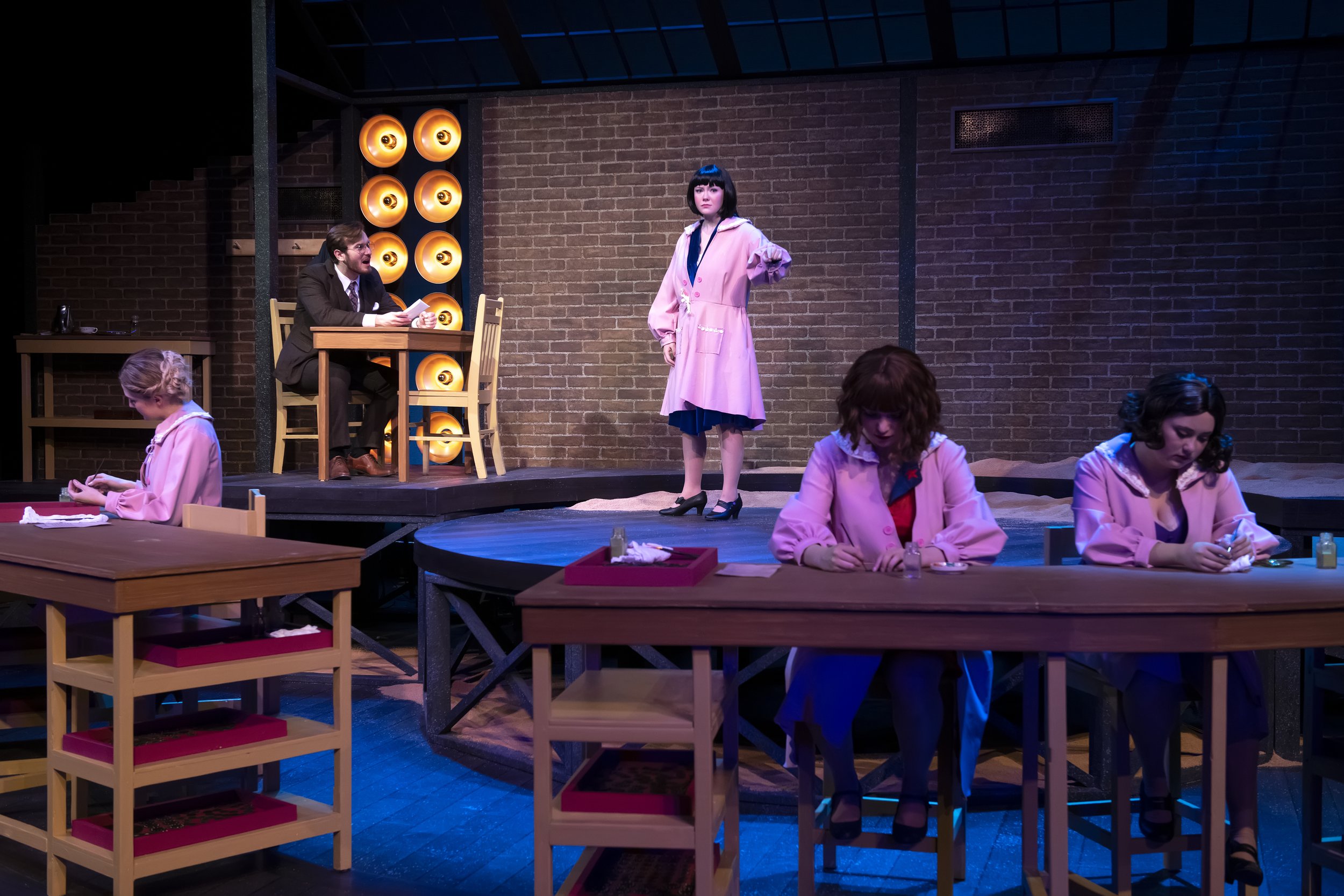CATHERINE. There is a God. And he’s made of time.
There’s a devil, and he’s made of time.
There are angels, miracles, and sins, and they’re all made of hours.

Catherine sets the scene

Catherine's first day at Radium Dial

"Sparkling like an angel."

"Over a million customers can't be wrong!"

Day on the shores of Lake Michigan

Mr. Reed offers company "assurances."

Catherine is let go

Catherine and Charlotte deal with the prognosis

The crew meets Leonard Grossman. "Specialties: workman's compensation, compassion for the working class, and general outrage."

The courtroom.

Last trip to the lake.

"There is a God. And he's made of time."
These Shining Lives, by Melanie Marnich
Director: Patrick Konesko
Assistant Director: Alyssa Konesko
Scenic Designer: Scott Tedmon-Jones
Costume Designer: Jenny Foldenauer
Lighting and Video Designer: Jason Banks
Sound Designer: Don Turner
Dramaturgy: Blake Watson
Stage Manager: Megan Wilson
Photography: University of Wyoming Institutional Marking/Ted Brummond
Dramaturgical Statement
In 1898 Marie and Pierre Curie discovered the element Radium and subsequently won the Nobel prize for their work in 1903. This discovery would set off a chain of events that would have long-lasting consequences: it would usher in the atomic age, start new booming industries, pave the way for the Manhattan project, and claim an untold amount of lives in the process. None of this was apparent to the Curies at the time.
Early applications showed that the element was effective in destroying cancerous cells. No one knew exactly what else this miracle element could do. The detrimental effects of radiation were either not known, or not openly advertised to the public. Companies all over the world began advertising it as a health product, putting it in everything from drinking water to suppositories. The potential of radium seemed limitless.
One radium-based industry that began to boom in the teens and twenties was painting watch dials with luminescent, radium-based, paint. In 1922 The Radium Dial Company set up a studio in Ottawa, Illinois. This is where playwright Melanie Marnich sets These Shining Lives. By following the lives of actual dial painters in Ottawa, she gives the audience a glimpse into the struggles, joy, pain, and humanity that these women experienced.
The world of Marnich’s play is one where time doesn’t flow uniformly. Years can pass in scene transitions or alternatively moments can extend out, lingering indefinitely onstage as these women defiantly cling to whatever hope and joy they can manage to find.
Marnich makes it clear in the notes of the script that these women are not victims. The women in this play (and their real-life counterparts) show incredible spirit, courage, heart, and determination. They loved, argued, laughed, grieved, and as Kate Moore writes in her book The Radium Girls, “They made every second count.”
- Blake Watson, Dramaturge